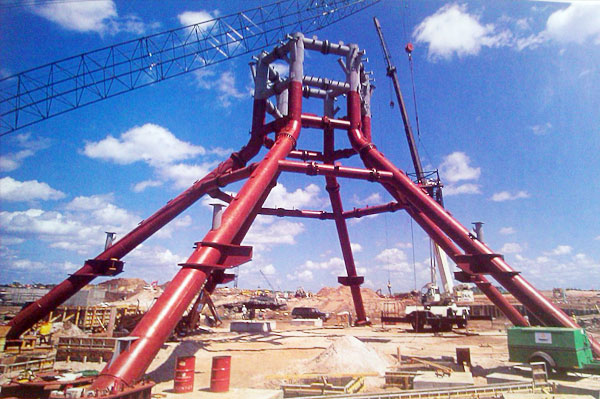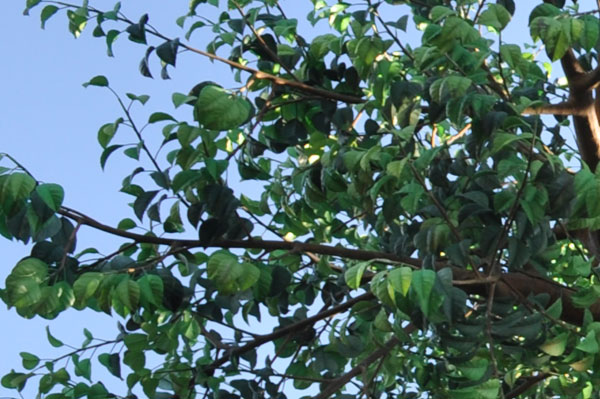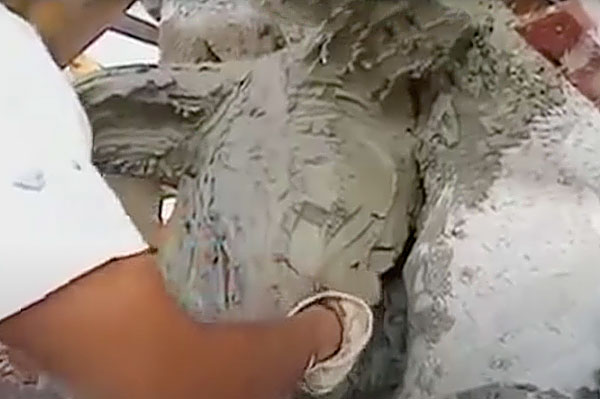10 Things You May Now Know About the Tree of Life

Today is Earth Day, which also marks the anniversary of Disney’s Animal Kingdom, which opened on this day in 1998. To honor this beautiful park, we thought we would share some fun facts about the centerpiece of Disney’s Animal Kingdom, and a true symbol of conservation and our relationship with nature, the Tree of Life.

1. Building an Icon
From start to finish, the process of constructing and detailing the Tree of Life took just over two years, and what a process it was! Even before construction began, Imagineers had to solve the challenge of making the structure sturdy enough to withstand Florida’s hurricane winds. It also needed to safely support a full canopy of branches while providing an interior space.

2. A Mighty Tree
The enormous tree towers over its surroundings at a mighty 145 feet and boasts a base diameter of 50 feet with a root and canopy system extending to a diameter of 170 feet.

3. The Animal Carvings
325 animals can be found among the tree’s roots, trunk, and branches, and while that seems like a lot (and it is!), it was still a tiny number compared to the number of species that inhabit our planet. Artists quickly realized that it would be impossible to represent every animal on Earth, so the decision was made to carefully choose animals that were different from one another in features, size, shape, location, and even time of existence, to capture the idea that there are many wondrous forms of life on Earth.

4. So How Do You Construct a Giant Tree?
The original plan for the trunk was a basic building disguised as a tree. A few large, strong branches would emerge from the top of the building, which would then attach to a large geodesic dome. The dome’s exterior would be decorated with leaves and small branches, disguising the fact that there was a dome.

5. An Unusual Inspiration
But soon, a new concept emerged, proving that great ideas can come from anywhere. An Imagineer was watching an educational program about offshore drilling and noticed that the oil rig’s structure looked vaguely similar to that of a tree trunk. By modifying the engineering plan of one of these rigs, Imagineers could create a support skeleton that could withstand the elements while maintaining the appearance of a tree. Better still, the frame allowed a sizable interior space within the trunk without compromising the structure. Other important constructional features included the huge expansion joints at the beginning of each major branch, allowing them to safely sway in strong winds.

6. It Would Have Been a Spectacular View
Several other concepts were considered before the idea of a theater was settled upon for the interior space. One idea called for a means of ascending to the tree’s canopy. A small overlook would have been at the top, providing Guests with a breathtaking view of Discovery Island. Another idea was the Roots Restaurant, which would have been a fine eatery located within the roots and trunk. Eventually, these ideas were put aside in favor of a large theater.

7. Coloring the Tree
Multiple shades of brown and green were used to paint the bark of the tree, each color carefully layered so that it would look like the real thing, even at a close distance.

8. OK, How Many Leaves Are There?
There are 102,583 leaves, each fabricated with varying degrees of translucency, allowing them to mimic how sunlight shines through real leaves. Once the leaves were created, they were attached by hand to the 7,891 ending branches.

9. Planning the Carvings
The artists worked out the locations of the animal carvings ahead of time, utilizing numerous models. These models, fabricated from blocks of foam, ranged from miniature recreations of the tree to full-size replicas of the carvings. This pre-planning was crucial since the plaster used for the carvings hardened fairly quickly. It was critically important for the sculptors to know precisely what they were doing and where they were doing it. Each of the 20 sculptors, led by Character Plaster Production Designer Zsolt Hormay, could carve a six-to eight-square-foot area per day, or the equivalent of one typical medium-sized carving.

10. David Greybeard
When chimpanzee expert Dr. Jane Goodall visited Disney’s Animal Kingdom during its construction, she wondered if a chimpanzee was carved on the Tree of Life. At the time, a chimpanzee carving was not planned; however, Goodall’s interest prompted the artists to create a carving of David Greybeard. David was one of Goodall’s most famous chimpanzee subjects. The carving, located just at the entrance of the Tree of Life Theater, pays tribute to him and Jane Goodall’s research.
Enjoy the magic of Disney all year ’round with Celebrations Magazine!

